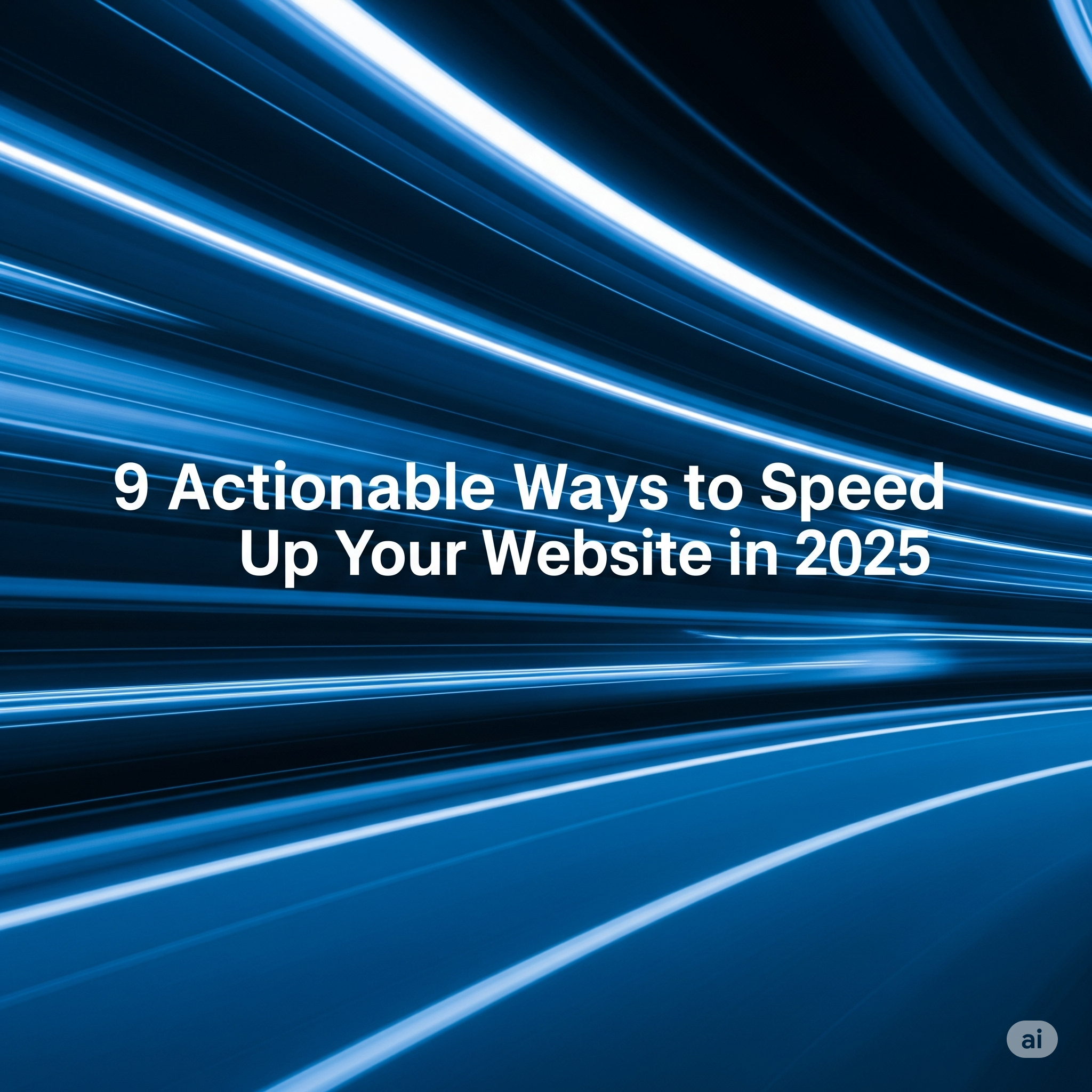I. TL;DR (Too Long; Didn’t Read)
A slow website will cost you customers and rankings. To speed up your site, start by testing its performance with Google PageSpeed Insights. Then, focus on the biggest wins: compress and optimise your images, enable browser caching to help repeat visitors, minify your code to make files smaller, and ensure you’re using a quality web host. These actions will make your site faster for both your users and for search engines.
This guide will explain why website speed is a crucial ranking factor and provide a clear, actionable checklist of the most effective ways to improve your page loading times. We’ll help you create a better user experience and boost your SEO.
II. Introduction
We’ve all been there. You click a link, and you wait. And wait. And wait some more. How long before you give up and hit the “back” button? Three seconds? Five?
Just like in gaming, lag is the enemy. On the web, we call it a slow load time, and it’s just as frustrating for your potential customers. In 2025, a fast website isn’t a luxury; it’s an absolute necessity. This post will give you the practical steps to ensure your site is the fast one, not the frustrating one.
What is Page Speed and Why Does it Matter?
First, a quick definition. Page speed is the time it takes for all the content on a specific webpage to fully load for a user.
So, why is this so important?
- For Your Users (User Experience): A faster site leads directly to a better experience. This means lower bounce rates (fewer people leaving immediately), higher engagement (people stay longer and view more pages), and ultimately, better conversion rates. A happy user is more likely to become a customer.
- For Your SEO: Google cares about making its users happy, so it cares about page speed. Speed, measured by a set of metrics called Core Web Vitals, is a direct ranking signal. A slow site can actively harm your ability to rank, while a fast one gives you a competitive edge.
How Can You Test Your Website’s Speed?
You can’t fix what you can’t measure. Before you start making changes, you need a baseline.
The best place to start is Google PageSpeed Insights. It’s a free tool that analyses your site’s performance and gives you a score out of 100 for both mobile and desktop. More importantly, it provides a list of specific, actionable recommendations on what you can fix to improve your score. Run a test now, and let’s look at how to tackle some of the most common recommendations.
How Can You Improve Your Website’s Speed? (An Actionable Checklist)
Here are some of the most effective techniques for speeding up your website, broken down into simple steps.
Section 1: Optimising Your On-Page Content & Code
- Compress and Optimise Images: This is often the biggest and quickest win. Large, high-resolution images are one of the most common causes of slow pages. Make sure you:
- Resize images to the correct dimensions before uploading them. A 3000-pixel wide image is unnecessary for a 600-pixel wide blog column.
- Compress images using tools like TinyPNG or ShortPixel to reduce the file size without a significant drop in quality.
- Use modern formats like WebP where possible, as they offer better compression than older formats like JPEG.
- Minify CSS, JavaScript, and HTML: Minification is the process of removing unnecessary characters from your code files, like spaces, comments, and line breaks. This makes the files smaller and quicker for browsers to download and process. Many caching plugins can do this automatically.
- Defer or Remove Render-Blocking JavaScript: Some scripts (especially third-party ones) can prevent the rest of your page from loading until they are fully downloaded. Deferring these scripts tells the browser to load the important, visible content first and load the script afterwards, improving the perceived load time for the user.
Section 2: Optimising Your Server and Network
- Enable Browser Caching: Caching is like giving a visitor’s browser a short-term memory of your site. It allows the browser to store static files (like your logo, CSS files, and images). When that user visits another page or comes back to your site later, their browser can load those stored files instantly instead of having to download them all over again.
- Choose a Performance-Optimised Hosting Solution: Your web host is the engine of your website. If you’re on a cheap, overloaded shared hosting plan, your site will never be truly fast, no matter how much you optimise it. Investing in a quality hosting solution is a direct investment in your site’s speed and reliability.
- Reduce Redirects: A redirect is when a user is sent from one URL to another. Each redirect adds an extra HTTP request-response cycle, which adds loading time. While sometimes necessary, you should audit your site to remove any redirects that are no longer needed.
- Use a Content Delivery Network (CDN): A CDN is a network of servers located all around the world that stores a copy of your website’s static files. When a user visits your site, the CDN delivers those files from the server that is geographically closest to them. This dramatically reduces the distance the data has to travel, significantly speeding up load times for a global audience.
Section 3: Platform-Specific Tips
- Eliminate Unnecessary Plugins (for CMS users): If your site runs on a platform like WordPress, it’s easy to accumulate plugins over time. Each plugin adds code and processes that can slow your site down. Regularly audit your plugins and deactivate and delete any that are old, poorly coded, or no longer necessary.
Conclusion
A fast website is no longer a luxury; it’s a fundamental requirement for keeping users happy and ranking well on Google. While it can seem technical, focusing on a few key areas like image optimisation, caching, and choosing good hosting can yield significant improvements. By making your website faster, you’re not just improving a performance metric; you’re creating a better, more effective experience for every single visitor.
Is your mobile website frustrating users and hurting your rankings? It can be tough to diagnose the exact cause of a slow site. Contact NeedSEO today for a professional website speed audit, and let’s build an experience your customers will love.







